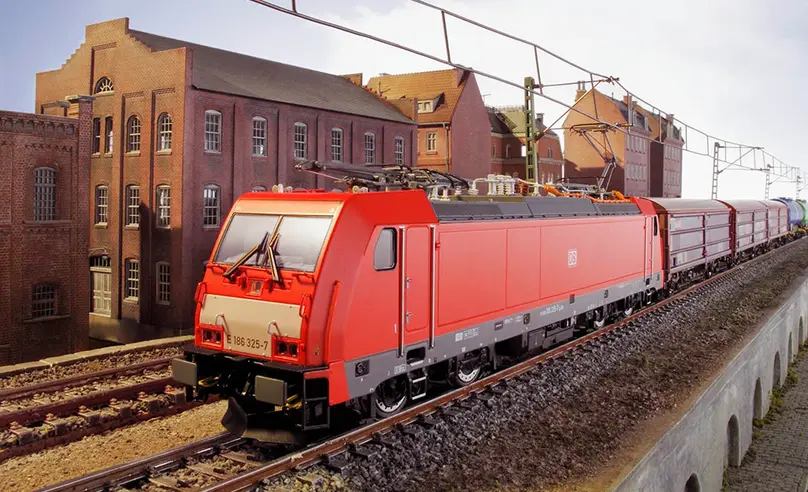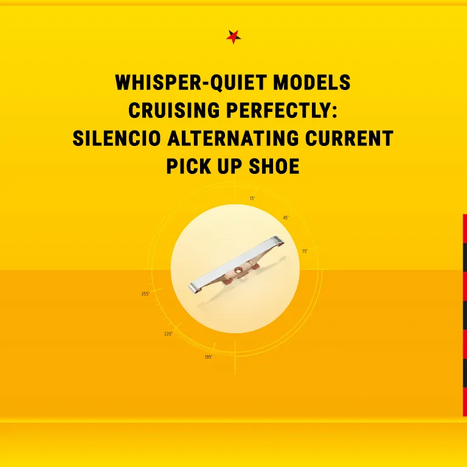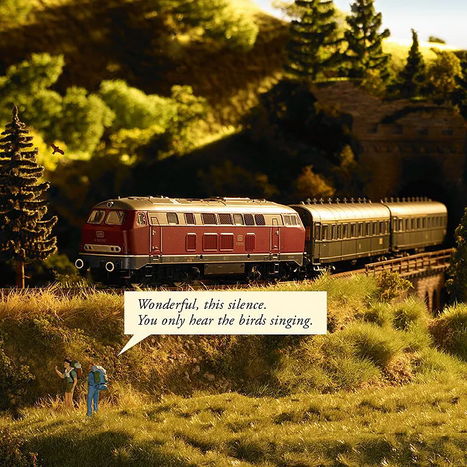
Attention to detail also applies to our engineering
We keep our promise of high quality by always ensuring trueness to the original with regard to appearance and engineering. Our models inspire collectors thanks to their scale, outstanding quality and wealth of fascinating details – such as individually mounted handlebars and steps, flexible buffers and clear imprints.
Attention to detail as a promise of quality
Powerful motors, precise drives and the harmonious interaction of motor and transmission give our locomotives driving characteristics that correspond to the original. They demonstrate very good low-speed characteristics and realistic maximum speeds. Technical refinements, including sound and even smoke for steam locomotives, provide additional train-driving pleasure.
Premium materials and meticulous workmanship ensure that BRAWA models are high quality. Our locomotives are predominantly made from die-cast zinc, which brings advantages in terms of weight and robustness. To ensure extreme durability, the load-bearing parts of the lights are made entirely from brass or etched sheet metal. In addition, our bulbs and LEDs are characterised by a long service life.
German Engineering
Attention to detail defines every production step
Each new product is supported by our passion to create the perfect reproduction. As a result, we begin our work on every new model by conducting meticulous research — museums and private archives are scoured, originals measured and photographed in detail, and building plans and photographs studied. Then the actual product development phase begins. First, the design plans are created in CAD and compared against the original. This is followed by the production of casting tools, hand samples and pre-production samples. These undergo comprehensive testing with regard to their technical properties at our test facilities in Remshalden. At the same time, the casting tools are further refined in order to achieve the best possible driving characteristics and ensure that the visual refinements are as true to the original as possible. Only then do we begin series production, at the end of which the fine details are added by hand.
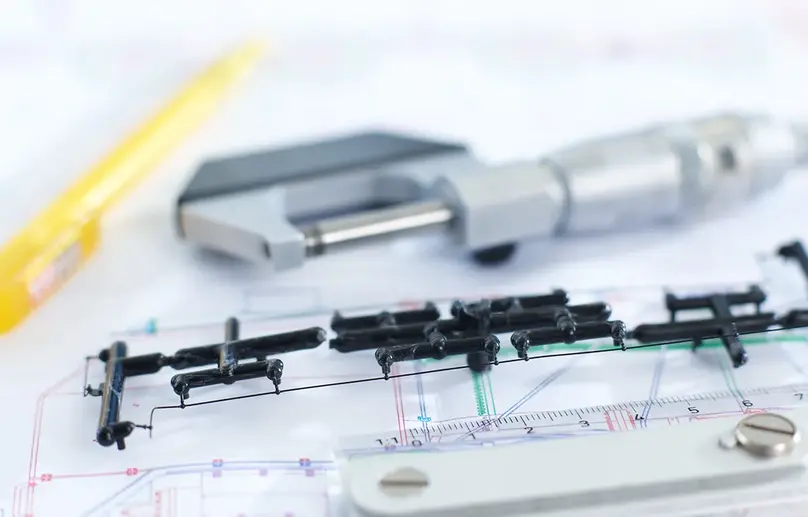
True added value
ATTENTION TO DETAIL CREATES ADDED VALUE FOR THE LONG TERM
BRAWA keeps its promise of “attention to detail” by producing models whose appearance and engineering are as true to the originals as possible. This represents genuine added value that continues giving the owners pleasure for many years after their purchase. BRAWA models are distinguished by a number of unique factors, including the German engineering excellence at our Remshalden location, high manufacturing quality thanks to the use of premium materials and high-quality electronic components and, of course, the many fascinating details we add to our designs. In addition, let’s not forget our constant development of both new and existing products, as well as our exclusive, limited edition series.
Attention to detail” also applies to our service
The BRAWA promise of quality also encompasses a generous range of services. These include spare parts supplies, maintenance, our telephone hotline as well as extras for retailers. Thanks to our large spare parts store, a large number of our parts can be reordered — even many years later. The drawing containing the individual parts list that is enclosed with each locomotive makes ordering easy. Delivery is quick and reliable. Naturally, we also carry out repairs, conversions and technical tests. After all, even the most well-maintained model requires an occasional visit to the workshop.
Just call us or send us your model by post. We’ll carry out the necessary work with know-how, passion and speed.
BRAWA uses direct and alternating current
All BRAWA locomotives in H0 gauge are available for direct and alternating current, and drive smoothly on all common track systems. This results in even greater choice for model railway fans because our range includes numerous models that are not available anywhere else. Trueness to the original – right down to the details.
High quality, superior tractive force, exquisite details
We combine premium materials with meticulous workmanship: Our locomotives are predominantly made from die-cast zinc. As a result, they feel reassuringly heavy in the hand, sit firmly on the tracks and therefore excel in terms of tractive force and robustness. BRAWA AC locomotives are factory fitted with a high-quality digital decoder.
For instance, the boiler, locomotive chassis, platform walkway, tender housing, spoke wheels and coupling rods are made from die-cast zinc on the majority of our steam locomotives. Powerful motors and the interaction with the gear unit give the locomotives superior tractive force and true-to-original driving characteristics. Furthermore, the weight of the locomotive and the good rest of the wheels as a result of the three-point suspension contribute to the high tractive force. Our models are extremely appealing thanks to their high level of detailing – specially mounted handlebars and steps are only some of the parts that make up our BRAWA locomotives, each of which may include up to 1,000 individual components.
Whisper-quiet models cruising perfectly
Some AC locomotives clatter along the tracks rather loudly. The primary source of this noise is the central pick up shoe on the underside of the locomotive, which draws power via the track nubs. By contrast, BRAWA locomotives are wonderfully quiet thanks to the Silencio alternating current pick up shoe. Produced using thin phosphorus bronze steel and nickel-plated, it audibly reduces the rattling and ensures a pleasantly quiet travelling noise. Our pick up shoe is also available for retrofitting to all AC locomotives (Order-No. 2225).
True to the original epoch
From the early days of the railway up to today
A dedication to detail is also reflected in the true-to-original features of the epoch. In addition to construction type, the livery, paintwork and detailed features of locomotives, wagons and accessories tell the history of the period. Whether you are a collector or an ambitious railway builder - BRAWA makes it easy to assemble a train set true to the original epoch. We stock locomotives and wagons of all six railway epochs according to the NEM standards (Normal European Modelling Standards) - the pictogram bar of the models lists a designation of the epoch. And here in our website we recommend appropriate models of the corresponding epoch for individual locomotives and wagons.
Epoch I: 1835 - 1920
Länderbahn epoch
The beginnings of the railway epoch are characterised by large state railways and numerous private railways mostly of regional significance. Accordingly, the construction types are numerous and the appearance of the locomotives and wagons has many different colours. Team locomotives are dominant.
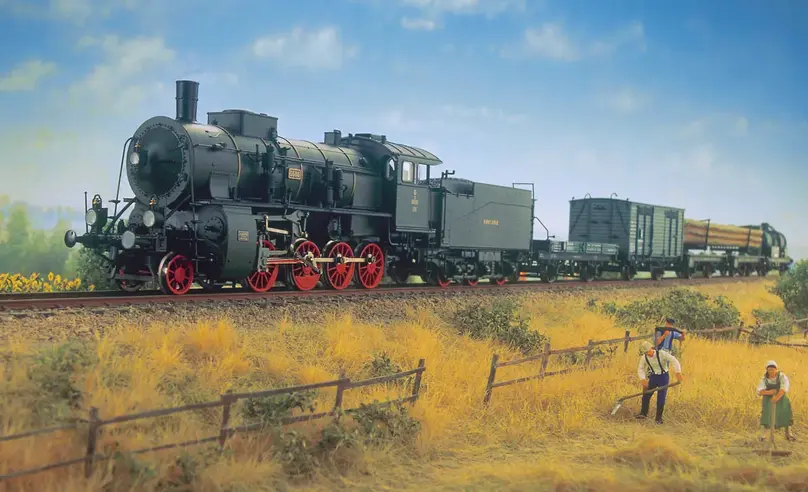
Epoch II: 1920 - 1950
Reichsbahn epoch
Take-over of the Länderbahn railways by the German Reich and foundation of the Deutsche Reichsbahn (DRG) and other national state railways (DBÖ, SBB). The wide variety of locomotives and wagons was reduced due to the use of standard construction types. The last great heyday of the steam locomotives.
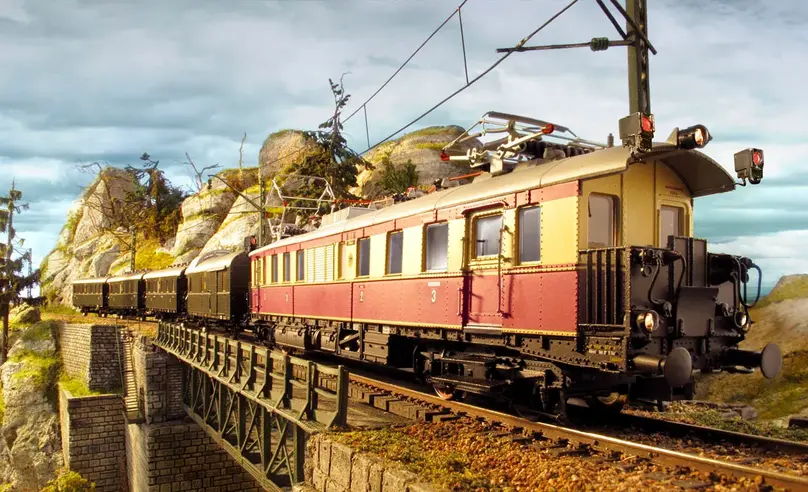
Epoch III: 1950 - 1970
Early Bundesbahn and Reichsbahn epoch
The railway networks in West (DB) and East (DR Germany develop independently of each other. An extremely mixed fleet of vehicles is formed, including steam, diesel and electric locomotives.
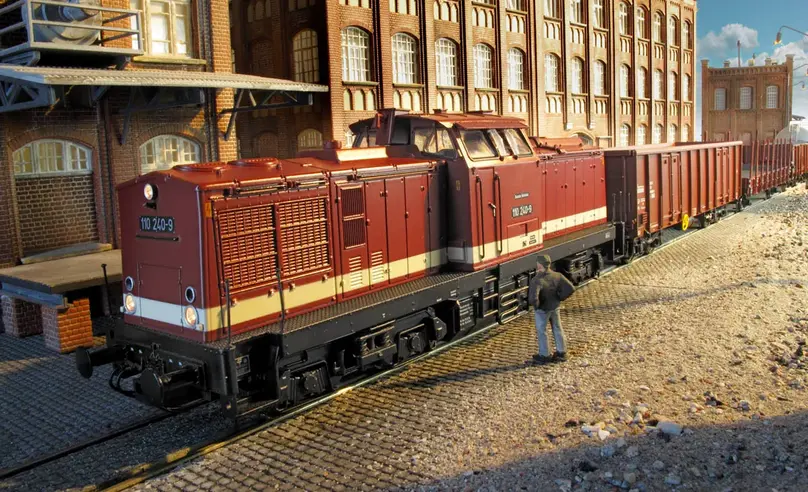
Epoch IV: 1970 - 1990
Late Bundesbahn and Reichsbahn epoch
The conversion to diesel and electric locomotives is more or less complete. Introduction of international vehicle designations. New train types such as TEE and InterCity or City and InterExpress trains as well as new colour concepts make the railway more varied and more colourful.
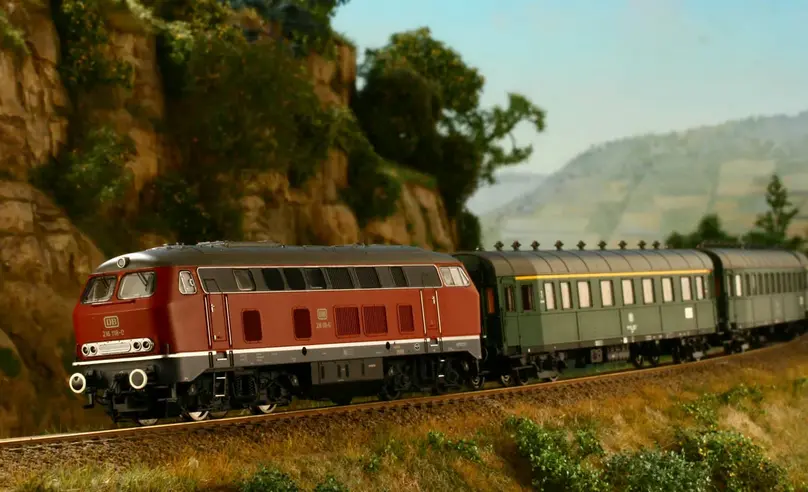
Epoch V: 1990 - 2007
Epoch of the Deutsche Bahn AG
Co-operation of both German state railways and conversion into Deutsche Bahn AG. Introduction of the ICE network. Application-oriented colour concept for locomotives and wagons. Partial privatisation of European state railways leads to a wide variety of colours on Europe's rail tracks.
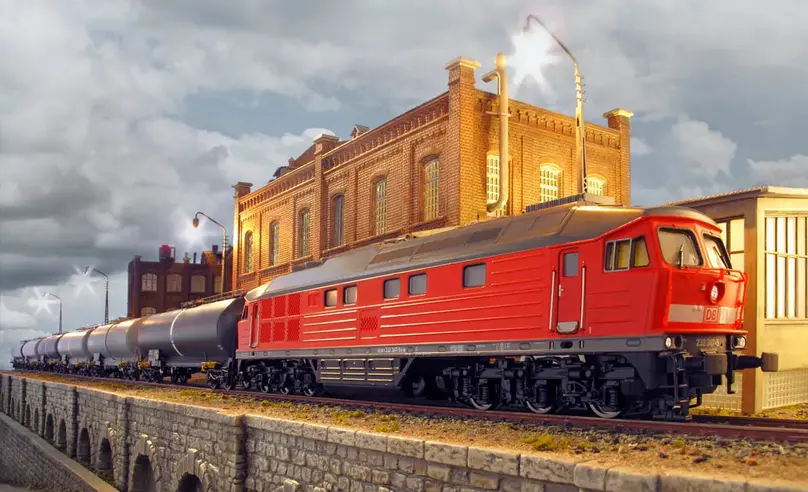
Epoch VI: ab 2007
Epoch of liberalised railway traffic in Germany
New numbering system according to UIC or TSI (12-figure also for railcars), but no uniform design of livery.
